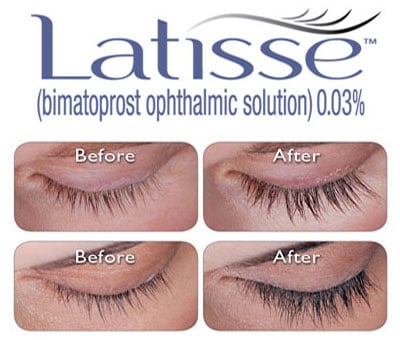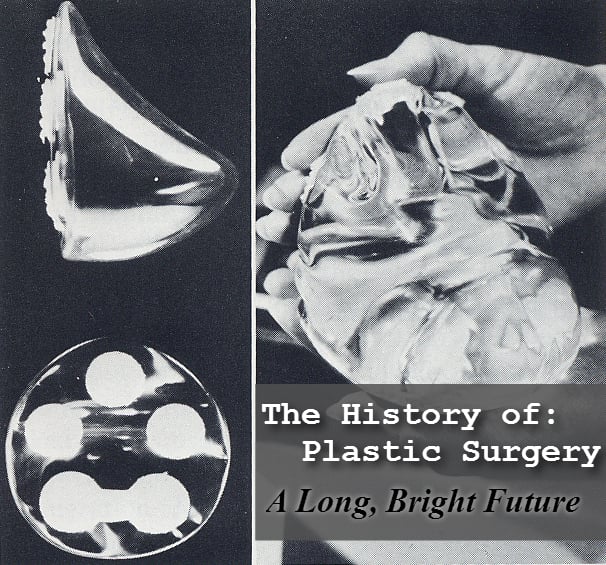






Sometimes the answer is right under your nose. One of the hardest working parts of your body can affect everything from your memory center to the way you sleep at night—your nose. That’s right, your schnauze has a pretty large impact on the way you experience the world, far beyond the basic sense of smell. If you aren’t breathing just right, rhinoplasty may be the surprising answer.
Your nose has a fairly big impact on your life, whether you realize it or not, and it goes beyond letting you smell the roses. To help you understand how prominent it can be, we’ve compiled a list of the ways your nose works for you: Seinfeld fans may remember the scene where Kramer praises George’s girlfriend—for everything but her nose:
Scene is at 1:19
Scientists at the University of Texas Southwestern Medical Center in Dallas say that Kramer may have had a point: as the most prominent facial feature, the nose can impact the way we perceive a person. Rumors of what a nose shape may indicate date way back: the Greeks and Romans believed that a long, strong nose meant power and strength.
While you may be largely unconcerned with how your nose is perceived, a recent study by Psychology Today reported that a person’s facial features can signal more about a person on first impressions than what they were or even the way they may act. Before you go researching what your nose shape may mean, you’ll want to figure out what it is. According to the Journal of Craniofacial Surgery, a minimum of 14 different nose shapes exist in humans. These range from the downward-hooking “hawk” to the traditional straight “Greek” nose, with the “fleshy” nose being the most common. Although ethnicity and genetics play a factor in nose shape, they’re more likely to determine the way you sneeze than exactly how your nose looks.

Beyond looks, your nose also has a large impact on health. Your nasal cavities are linked to your ear and throat cavities, which can explain why discomfort with one often results in problems with another. In addition to being an amazing filter for the air you breathe in, your nose has the ability to detect over 10,000 scents and smells.
What is even more impressive than the 12 million olfactory receptor cells you have is their connection with your brain: they have a direct line to your memory. In fact, smell is the only one of the five senses with direct lines to the hippocampus (memory formation) and amygdala (emotion). If you’re experiencing problems with your sense of smell, it could also affect the formation of memories due to a lack of information when forming them. While a stuffy nose can’t be to blame for severe memory impairment, it does have an impact.
That’s not all—your nasal cavity also has an impact on the way you sleep. If your nasal cavities are impaired in any way, breathing at night can become troublesome. This in turn can lead to a variety of problems including sleep apnea, where you momentarily cease breathing while asleep.
Depending on the medical condition that urged you to look into rhinoplasty, your experience in plastic surgery may vary. In some cases, an otolaryngologist may perform the initial surgery and require you to follow up with a plastic surgeon. A nose job can be used to repair:
If you aren’t sure of the impact your nose may be having on your medical problems, talk with your doctor. Although the nose may not be to blame, inquiring about it could be the difference between breathing easy and keeping your partner awake with your snoring!
Before you can dismiss the benefits a nose job may have upon your medical issues or write it off as a risky cosmetic procedure, here are some things you should know (courtesy of the American Society of Plastic Surgeons):
Take it from us—you aren’t alone in considering rhinoplasty. As always, you’ll want to talk to your doctor and do a thorough research of the procedure before committing. Our very own News9 did an in-depth article on what it was like to have a rhinoplasty procedure done. Once you’ve chosen an ASPS-accredited surgeon, be sure to have them walk you through what to expect. For questions or a consultation, contact us. We’d love to help you breathe easier!


In general, society seems to have a set of standards for women that are very different than the standards set for men. Men are more likely to be judged based on their education level, their professional accomplishments and their achievements in life. On the other hand, a woman is almost immediately judged based on her appearance — especially her figure.
For years, women who have chosen to have a breast augmentation performed have battled the stigma surrounding this cosmetic procedure. While that stigma is slowly lifting and society is having a change of heart about plastic surgery in general, women must still maneuver the opinions of others when discussing their personal decision to have a breast augmentation.
For years, stereotypes in movies, advertisements and even literature have portrayed women with large breasts as being overly-sexual, under-educated and reliant upon men for their happiness and fulfillment in life. Thus, the stigma quickly developed that women who opted to enlarge or reshape their breasts through cosmetic surgery must be vain, selfish and looking to attract men. However, choosing to have a breast augmentation does not make a woman any of these things. Many women choose to have this plastic surgery performed simply because it makes them feel better about themselves and improves their confidence.
According to Breast Enlargement Advice, the best way for women to overcome some of the stigmas associated with this cosmetic surgery is to choose a natural size for their new breasts. If a woman has small breasts to begin with and only wears an A cup bra, then moving up to a C cup will appear natural and normal. However, women who decide to go beyond the natural sizes may face increased scrutiny from peers, coworkers and people in the public. Whatever size a woman decides on for her new breasts, she may have to deal with negative feedback from others.
Some people find an increase in sexual harassment in the work place after they have a breast enlargement surgery done, while others hear derogatory comments from friends and family members about their new image. The best way for women to cope with this is to ignore the comments completely. While this is easier said than done, a woman must feel confident that she made her choice for the right reasons and not provide satisfaction to the people who are trying to bring her down.
Women may take comfort in the fact that breast enlargement surgery is increasing in popularity across the entire country, according to the American Society for Aesthetic Plastic Surgery. Even in conservative states, where plastic surgery has long had a stigma attached to it, more women are opting to have this surgery performed. The numbers have increased drastically since the late 1990s, when just more than 100,000 breast augmentation procedures were performed in the United States. In 2011, more than 315,000 breast enhancement surgeries were performed across the country.
According to the American Society of Plastic Surgeons, breast augmentation is defined as a surgical procedure designed to increase the fullness and size of the breasts while also improving their symmetry. Women who have small breasts as a result of genetics often opt to have this surgery to increase their size and improve their figure. However, many women opt to have this surgery done after their child-rearing years are complete, as pregnancy and breastfeeding can have a negative impact on the appearance of the breasts.
“Cohesive silicone breast implants are the latest development in the field,” said Dr. Tim Love MD, a board-certified plastic surgeon in Oklahoma City. “This anatomical or tear drop shape implant is often ideal for use in patients with very little breast shape of their own.” He goes on to add, “These implants are commonly used in primary augmentation in a younger patient or in those correcting post pregnancy changes of volume and or shape loss.”
At the end of the day, having a breast augmentation procedure or any plastic surgery procedure is an extremely personal decision. Women should work with a highly-skilled and qualified cosmetic surgeon who will provide them with sound advice as well as natural-looking results. It’s important that women are aware of society’s opinions about this procedure, so that they can manage it and overcome the stigma after their own operation is complete.
Many plastic surgery patients take comfort in the fact that the stigmas surrounding cosmetic surgery and the breast augmentation procedure are slowly but surely changing. People are beginning to realize that cosmetic surgery is a wonderful way to boost your own self-confidence and improve many different aspects of your life.


Numerous sources date early efforts of rudimentary plastic surgery back as far as 4,000 years in India, and others indicate early efforts at reconstructive surgery by the Egyptians over 2,000 years ago. 
The Roman nation conquered the world with the first professional army, including a full medical corps. Efforts to do reconstructive surgery on wounded soldiers made Rome a center of work in the area of early plastic surgery.
In fact, according to the United Nations of Roma Victrix, successes in this area made such surgery an early resource to wealthy citizens for purely cosmetic reasons. One popular procedure was otoplasty, repairing ear lobes of women stretched too far because of the heavy earrings popular at the time.
War continued to influence the development of reconstructive surgery and techniques. According to an article by Dr. Gus Colon of Tulane Univeristy, Gaspare Tagliacozzi worked on wounded soldiers and sword dueling victims, ultimately publishing the first modern textbook dealing with plastic surgery. While several doctors are given the honorary title of “Father of Plastic Surgery,” Tagliacozzi is considered by most to be the first true plastic surgeon.
The American Society of Plastic Surgery site reports that the first recorded breast augmentation was performed in 1895, followed by development of more advanced breast implant materials in 1895. However, it was war that produced the next major advances in reconstructive surgery. The Gillies Archives tell the story of a young surgeon who committed his work to restoration of the many young men wounded during WWI. Modern warfare produced horrific injuries, including many facial burns and disfigurations. Dr. Harold Gillies worked on thousands of wounded soldiers and sailors and did the first successful replacement of eyelids, among other innovative procedures.
He published his still-used book, Plastic Surgery of the Face, in 1920. Gillies is another who is often referred to as the Father of Plastic Surgery.
Dr. Vilray Blair is another surgeon who honed his skills in WWI, focusing on skin grafts. Washington University School of Medicine notes the legacy of Dr. Blair, explaining how he left the U.S. to serve as a troop surgeon for the British Army during the Ashanti War. Blair published a number of books based on his wartime procedures and lessons learned. He also played a key role in establishing the American Board of Plastic Surgery in 1937. With the momentum spurred by these advances during both world wars in the first half of the twentieth century, plastic surgery rapidly became a specialty focused on elective procedures, as well as reconstructive surgeries.
According to Medscape, more than 10 million cosmetic procedures were performed in 2005, with a continual annual increase in total procedures greater than 10 percent. The 2013 Plastic Surgery report indicates that number is now more than 15 million when including minimally invasive procedures such as Botox injections. With continued advances in equipment, procedures and materials, the field of plastic surgery is entering a new and exciting phase of its history.

Everyone has boobs: it’s just a matter of how big they are. In some cases, bigger isn’t always better: large breasts can lead to a myriad of health problems, including damage to self-esteem. Whether you’re a female reconsidering a breast enlargement you had years ago or a male suffering from gynecomastia, there is no shortage of reasons to want a breast reduction. We’re here to help you decide.
According to the American Academy of Family Physicians, gynecomastia—the abnormal enlargement of male breast tissue—affects as many as 65 percent of boys aged 14-years or older. While onset is typically around puberty and resolves itself within two-to-three years, gynecomastia can affect men at any age and sometimes requires surgical removal. The enlargement may be barely noticeable—with a small form just behind the nipple—to a larger, more feminine-looking breast. The condition may affect one or both breasts, and may be painful at times.
In addition to the confidence and social stigma, gynecomastia can be a painful sign of an underlying condition like hyperthyroidism or a side effect of certain medications. While some minor cases of gynecomastia may be treated with minor lifestyle changes, more pronounced cases require surgery to correct the enlarged breast tissue. While the tissue growth is benign, other tests may be performed on the tissue once extracted to confirm it is not a sign of another, more serious condition. Recovery from gynecomastia surgery typically involves a chest wrap and a few days of bed rest. Depending on the discernible cause of your gynecomastia, your doctor may also recommend a few lifestyle changes.
For women, excessively large breasts affect over one million women in the United States alone. Breasts that are too large may lead to back aches, neck pain, migraines and even numbness in the extremities. As women age, their shoulders naturally roll forward, causing compression on the chest; with large breasts, the discomfort may be felt sooner rather than later.
Large breasts can be caused through a genetic disposition, menopause, after puberty, pregnancy, weight gain or any of those combined with breast augmentation surgery. Whatever the reason, abnormally large breasts can lead to a myriad of health problems that may be resolved through a breast reduction surgery.
While you may be uncertain regarding your breast size, your doctor may help you measure your breast-to-body ratio to determine if they are too large for your body frame. Additionally, a proper bra-fitting may give you an indication of the actual size of your breasts. The surgical approach of your breast reduction may vary depending on the cause of your enlarged breasts, meaning recovery specifications may be different as well. Be sure to talk to your doctor regarding what you need to expect and prepare for prior to surgery.
Plastic surgery isn’t just for any specific person, and neither is a breast reduction: regardless of the cause, sometimes there is such a thing as too big. Call us to talk about your questions and concerns, or to schedule a consultation. We’re happy to help get you back to a body you love!

Everyone has boobs: it’s just a matter of how big they are. In some cases, bigger isn’t always better: large breasts can lead to a myriad of health problems, including damage to self-esteem. Whether you’re a female reconsidering a breast enlargement you had years ago or a male suffering from gynecomastia, there is no shortage of reasons to want a breast reduction. We’re here to help you decide.
According to the American Academy of Family Physicians, gynecomastia—the abnormal enlargement of male breast tissue—affects as many as 65 percent of boys aged 14-years or older. While onset is typically around puberty and resolves itself within two-to-three years, gynecomastia can affect men at any age and sometimes requires surgical removal. The enlargement may be barely noticeable—with a small form just behind the nipple—to a larger, more feminine-looking breast. The condition may affect one or both breasts, and may be painful at times.
In addition to the confidence and social stigma, gynecomastia can be a painful sign of an underlying condition like hyperthyroidism or a side effect of certain medications. While some minor cases of gynecomastia may be treated with minor lifestyle changes, more pronounced cases require surgery to correct the enlarged breast tissue. While the tissue growth is benign, other tests may be performed on the tissue once extracted to confirm it is not a sign of another, more serious condition. Recovery from gynecomastia surgery typically involves a chest wrap and a few days of bed rest. Depending on the discernible cause of your gynecomastia, your doctor may also recommend a few lifestyle changes.
For women, excessively large breasts affect over one million women in the United States alone. Breasts that are too large may lead to back aches, neck pain, migraines and even numbness in the extremities. As women age, their shoulders naturally roll forward, causing compression on the chest; with large breasts, the discomfort may be felt sooner rather than later.
Large breasts can be caused through a genetic disposition, menopause, after puberty, pregnancy, weight gain or any of those combined with breast augmentation surgery. Whatever the reason, abnormally large breasts can lead to a myriad of health problems that may be resolved through a breast reduction surgery.
While you may be uncertain regarding your breast size, your doctor may help you measure your breast-to-body ratio to determine if they are too large for your body frame. Additionally, a proper bra-fitting may give you an indication of the actual size of your breasts. The surgical approach of your breast reduction may vary depending on the cause of your enlarged breasts, meaning recovery specifications may be different as well. Be sure to talk to your doctor regarding what you need to expect and prepare for prior to surgery.
Plastic surgery isn’t just for any specific person, and neither is a breast reduction: regardless of the cause, sometimes there is such a thing as too big. Call us to talk about your questions and concerns, or to schedule a consultation. We’re happy to help get you back to a body you love!